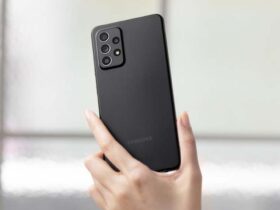Top 3 Key Points:
- iOS 18 leads in system animation and smoothness.
- One UI 7 aims to enhance responsiveness but still lags behind iOS.
- HarmonyOS NEXT focuses on being a fully Android-free system, pushing Huawei forward.
As the battle between mobile operating systems heats up, three major contenders are on the horizon: iOS 18, Samsung’s One UI 7, and Huawei’s HarmonyOS NEXT. Each of these systems brings something unique to the table, offering distinct experiences based on their design philosophies and target hardware. While iOS is Apple’s exclusive OS, One UI is built on Android for Samsung devices, and HarmonyOS NEXT will be a fully independent OS by Huawei, cutting ties with Android completely.
Mobile OS Smoothness: A Key Factor
Smoothness in a mobile OS is crucial to user experience. It is defined by factors like the fluidity of animations, the responsiveness to touch, and overall system performance. However, smoothness isn’t just about looks—it also depends on hardware, software optimizations, and how well the system can handle applications without lag.
Apple’s iOS has consistently excelled in this area. With the release of iOS 18, iPhones are once again expected to deliver unmatched smoothness. The tight integration between Apple’s hardware and software results in fluid animations, quick response times, and an almost seamless user experience.
On the other hand, Huawei is positioning HarmonyOS NEXT as a serious alternative to Android, launching an Android-free operating system that is native to its devices. While HarmonyOS NEXT is not yet released globally, it has gained attention for its fluid design and potential to rival iOS, especially in China. Huawei’s vision for HarmonyOS goes beyond just operating its phones—this OS could become the foundation of a broader ecosystem.
Samsung’s One UI 7, built on Android, is gearing up for significant changes. Samsung continues to refine its design language, focusing on responsiveness and a cleaner interface. However, One UI has often struggled to match the smoothness of iOS. Even with top-tier processors and high-refresh-rate displays, some users report a slight lag in animations compared to Apple’s offering. Samsung aims to address these concerns by working closely with Google to streamline Android apps for a more cohesive experience on Galaxy devices.
Can One UI 7 Beat iOS 18 in Smoothness?
There’s growing speculation that One UI 7 might finally bridge the gap between Android and iOS in terms of smoothness. Samsung’s collaboration with Google is expected to bring more optimized app performance to One UI, making it more competitive with iOS. The next version of One UI is likely to focus heavily on minimizing animation lag, improving app responsiveness, and offering a smoother experience across Galaxy devices. This could be a major win for Samsung, which has often been praised for its hardware but criticized for software smoothness.
While One UI 7 has promise, iOS 18 still holds a clear advantage. Apple’s ability to control both hardware and software ensures that their devices are always in sync, offering users a reliable and consistently smooth experience. However, Samsung’s efforts to close the gap are worth noting, especially with the potential for improved integration between Android apps and One UI.
What About HarmonyOS NEXT?
Huawei’s HarmonyOS NEXT is entering a different playing field. By breaking away from Android, Huawei is taking a bold step towards creating an independent OS that can run its devices without relying on Google services. While this move is significant, the question remains whether HarmonyOS NEXT can truly deliver the same level of smoothness that iOS offers, especially outside of China where Huawei’s ecosystem is less established.
HarmonyOS NEXT has a similar design philosophy to Apple’s iOS, focusing on a tightly controlled ecosystem. If Huawei can refine its software to take full advantage of its hardware, it could become a serious competitor to both Android and iOS, especially in markets where Huawei still holds a strong presence.
The Verdict: Who Will Win in Smoothness?
Each of these operating systems has its strengths. iOS 18 remains the gold standard for smoothness, with seamless animations and fluid user experiences. HarmonyOS NEXT is a wildcard, especially as Huawei pushes for an Android-free future. Meanwhile, One UI 7 has the potential to challenge iOS, but it will need to overcome some of the lingering issues that have held back previous versions.
In the end, it will be interesting to see how these three operating systems evolve in the coming months. While iOS 18 is already proving to be a champion in smoothness, One UI 7 and HarmonyOS NEXT are not far behind. Samsung and Huawei are both investing heavily in creating more fluid, responsive user experiences, and the competition between these giants will only push the industry forward.
For now, the battle for the smoothest OS continues, but Apple still has the edge. Will One UI 7 or HarmonyOS NEXT manage to surpass iOS in the future? Only time will tell.



Leave a Reply